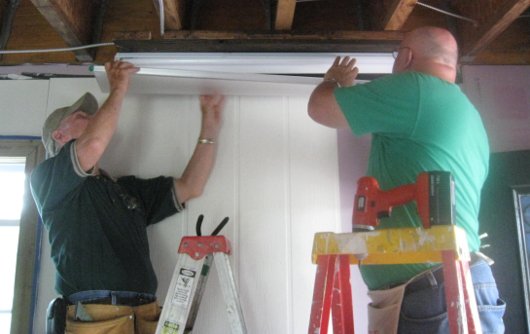Garage insulation is an important matter to consider as it allows the garage to adjust to the changing weather, keeping it warm during winter and cool in the summertime. Insulating the garage walls also sound-proofs them, keeping noise emanating within the garage from spilling outside, and vice versa. Most of the time, garages that are attached to the house have their common walls insulated already. However, the rest of the walls usually aren’t; which makes it necessary to learn how to insulate the garage by oneself.
Installing bats of fiberglass between the wall studs is perhaps the simplest method of open garage wall insulation. Fiberglass bats come as wide as either 13 inches (which fits between studs measuring 16 inches on center) or 21 inches wide (which fits studs that measure 24 inches on center), and have a thickness of either 3 ½ inches (fitting into 2 by 4 framing) or 5 ½ inches (fitting into 2 by 6 studs).
If one opts to use bats with paper backing, these are merely positioned between the studs starting at the floor and going up the ceiling, their paper sides faced outwards and stapled in position. The purpose of the backing is to supply a vapor barrier that prevents the moisture from shifting between the garage’s warm interior and its cold exterior in the winter (and the other way around during summer). If one chooses to use bats that don’t have paper backing, friction is used to hold them in place amid the studs. Their vapor barrier is provided by covering them with an unbroken plastic sheet measuring 6 mil; stapling it over the top of the whole wall.
Most assume that drywalled exterior walls are automatically insulated, but this may or may not be the case. One may be able to spot signs of insulation at either the top or the bottom of the garage wall. But to be certain, one only has to poke a hole through the wall and either reach in with their fingers and feel it out, or to shed a light and take a look into the hole.
If the wall indeed hadn’t been insulated, there is no need for the drywall to be removed in order to add it in. One can just install blown spray foam insulation through the holes in the drywall’s top, as well as between studs. Running down the cavity, the foam provides insulation by expanding and filling-in behind the drywall. It also blocks air movement completely as soon as it cures. It is ideal to use slow-curing foam insulation, as it is formulated to flow over blockages before setting up, moving in the back of the drywall before it expands and cures. In addition, builders sometimes leave garage doors without insulation to cut costs. To remedy this, one can just purchase a custom insulation panel that can fit onto any overhead garage door.



